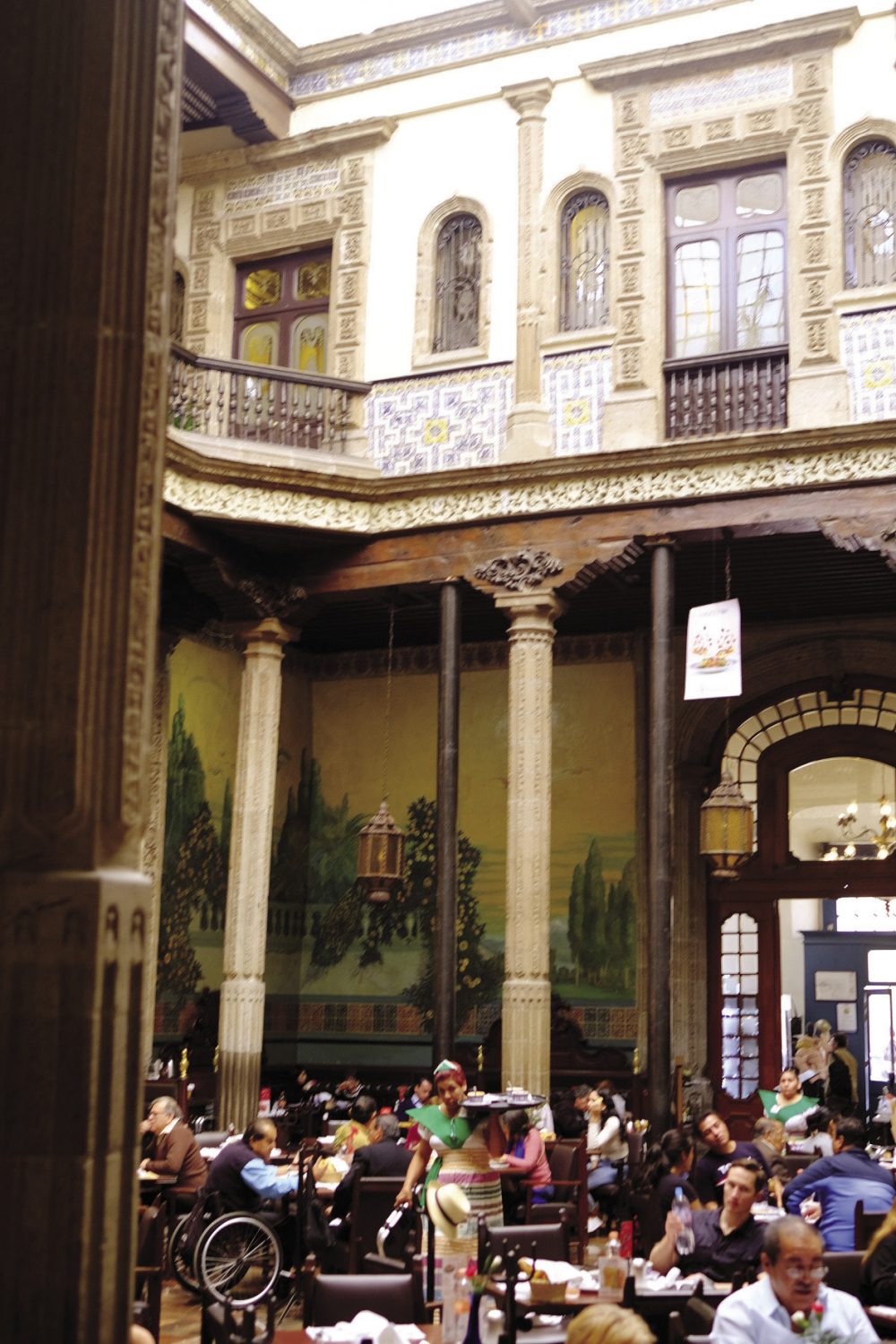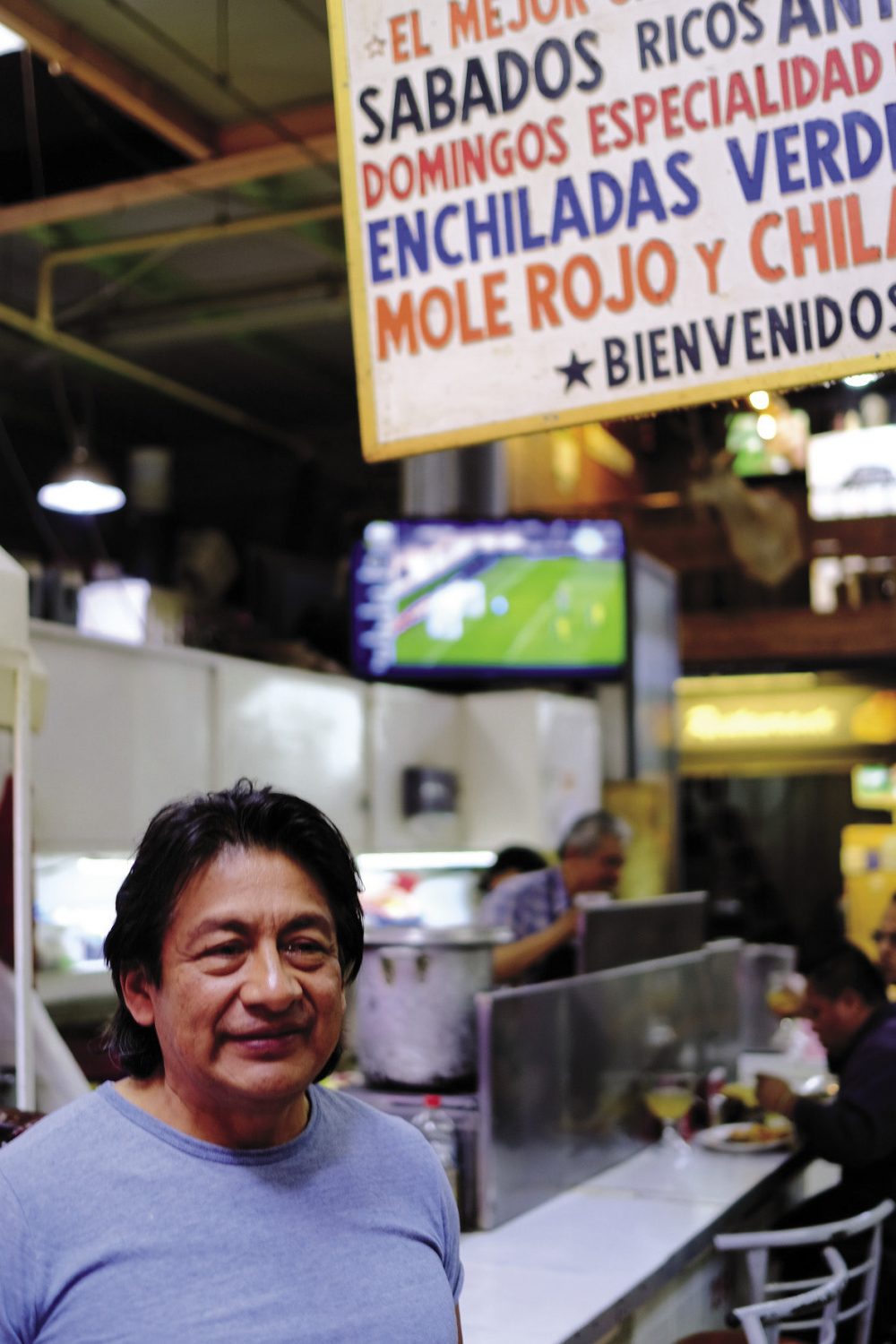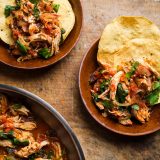There is nothing quite like starting the day with a sandwich of chilaquiles—fried pieces of tortilla simmered in red or green salsa and combined with black beans, a thin chicken cutlet, queso fresco, green salsa, and a spurt of crema served on a bolillo roll.
You also can add pulled pork, onions and chilies if your enthusiasm and appetite get the better of you. Serving on the sidewalk under a bright red awning, La Esquina del Chilaquil does brisk business, starting first thing in the morning. I started out thinking I would just have one bite. I ate the whole sandwich in minutes as a second breakfast.
I left Mexico City a better cook and in love with the cooking of the street, the restaurants and the home.

But Mexico City is not all street food. I had the best cheesecake of my life at Eduardo García’s Maximo Bistrot. At La Capital, the menu includes a ceviche of shrimp with jicama, mango and pumpkin seeds, as well as penne al chipotle, pasta with a goat cheese-tomato cream sauce, lime soup, and risotto with shrimp and black beans.
Which is to say, this city of 9 million is about so much more than taco crawls (though those rarely disappoint). This is a sophisticated culinary culture that offers memelas (griddled masa cakes) and fried-to-order potato chips on the streets and then three-star dining inside. I only wish that New York and Boston had street food half as good.
But street food and fine dining are only two of the many culinary pleasures of Mexico City. We had an appointment later that morning at the Mexican equivalent of our Culinary Institute of America to pay a visit to Sylvia Kurczyn, a toque-topped instructor who taught us a few homemade dishes, including tinga, a quick and easy chicken- and tomato-based recipe that can be used as a taco filling or a topping for tostadas.
A word about Mexican home cooking: “The Mexican kitchen starts with boiling water,” Kurczyn points out. And that is exactly how she prepared the chicken: simmered with onion, garlic, carrot and leek.
The Mexican kitchen also starts with a pressure cooker and a blender, two appliances that can be found in almost every home. I came to love the notion of cooking, say, unseasoned pork in a pressure cooker, then finishing it up on top of the stove with spices and herbs—the flavors are more vibrant if the sofrito, spices and chilies are not cooked for hours
There are other useful tricks as well. For example, a blender is a quick way of making a salsa that starts with a few charred vegetables. And many recipes such as tlayudas (a large tortilla filled with cheese, beans and thinly sliced beef, folded over and crisped on a grill) start with very thin cuts of meat.

Back to the tinga. The tomato sauce comes together quickly, and it contains chipotle chilies, cilantro, Mexican oregano and cumin. Then the cooked, shredded chicken is added to the sauce to finish.
As with many cuisines, there is tension between the sweet ingredients—tomatoes, onions and chipotles—and the savory herbs and chicken. To balance the flavors, there also is a hint of brown sugar. This pairing of sweet and savory is a hallmark of most cuisines, but rarely is considered by the French.
I left Mexico City a better cook and in love with the cooking of the street, the restaurants and the home. The integration of the past and present, of street food and Michelin-level dining, of simplicity of technique with a complexity of flavor all add up to a culinary destination that is worth every bite.







